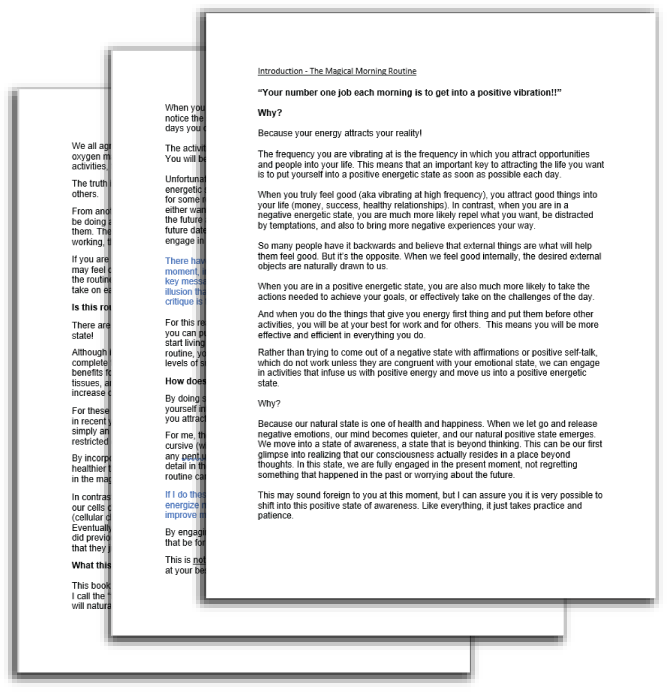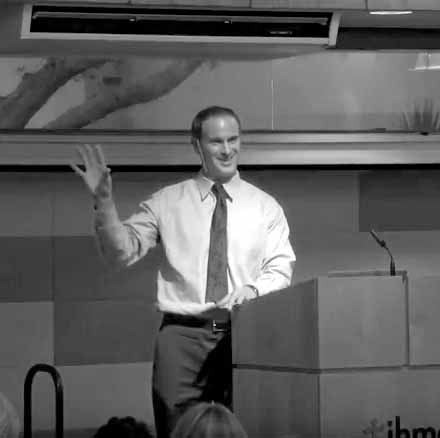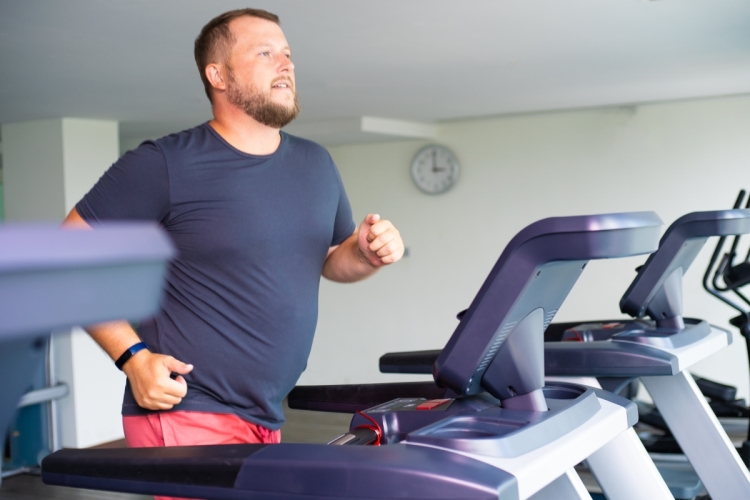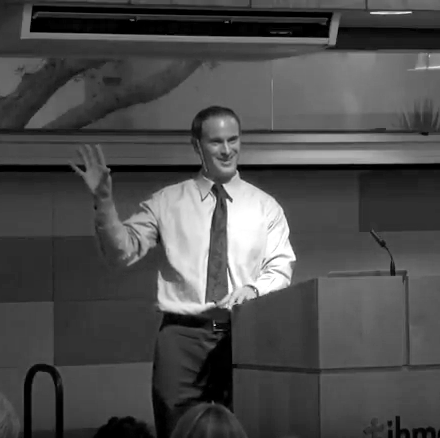The Power of Daily Decisions: Building Resilience Through Consistent Challenge
Written by Stephen Anton PhD on May 22, 2024

In the journey of life, we are faced with countless decisions every single day. From the mundane choices of what to eat for breakfast to the more significant decisions that shape our careers and relationships, each choice we make has the power to influence our reality and build our resilience. Yet, amidst the hustle and bustle of daily life, it’s easy to overlook the profound impact that our daily decisions can have on our long-term well-being and success.
One principle that often gets overlooked is the power of consistently choosing to do the harder thing. Whether it’s pushing ourselves to tackle challenging tasks at work, committing to a rigorous fitness routine, or embarking on the journey of learning a new skill, embracing the harder path can lead to transformative growth and resilience. It’s important to remember that the harder thing is often just a combination of many simple things. By breaking down daunting tasks into manageable parts, we can make significant progress over time.
The Path to Resilience
Resilience is defined as the ability to bounce back from adversity stronger than before. It’s the capacity to adapt and thrive in the face of challenges and setbacks. And while resilience is often thought of as an innate trait, research has shown that it can also be cultivated through deliberate practice and consistent effort.
One of the most effective ways to build resilience is by consistently choosing to do the harder thing. When we push ourselves outside of our comfort zones and embrace challenges, we create opportunities for growth and development that strengthen our resilience muscles. Just like a muscle grows stronger through resistance training, our resilience grows stronger through facing and overcoming adversity. Here, the notion that the harder thing is just a combination of simple things becomes vital. Each small step we take contributes to the larger goal, making the seemingly impossible achievable.
Physical Resilience: The Endurance Athlete’s Journey
Endurance athletes provide a powerful example of the principle of doing the harder thing to build resilience. Take Pati, for instance, a seasoned marathon runner who has won several competitions over the years and still competes to this day. Pati didn’t wake up one day and decide to run a marathon; it took months, even years, of consistent training and pushing her limits to reach that goal.
Each day, Pati pushed herself to run a little farther, to run a little faster, to endure a little more discomfort. And over time, her body adapted to the demands placed upon it, becoming stronger, more resilient, and capable of achieving feats she once thought impossible. This transformation was a result of many simple, consistent efforts that combined to build her extraordinary endurance.
The same principle applies to other forms of physical training, such as weightlifting. If your goal is to lift heavier weights, you don’t start by attempting to lift the heaviest weight possible. Instead, you gradually increase the weight over time, challenging your muscles to adapt and grow stronger with each workout.
Mental Resilience: The Growth Mindset
But resilience isn’t just about physical strength; it’s also about mental fortitude. Just as our bodies adapt to physical challenges, our minds too can expand their capacity through consistent challenge and stimulation.
Consider the example of learning a new skill or tackling a complex problem at work. These tasks can be daunting at first, but by consistently pushing ourselves to tackle them head-on, we expand our mental capabilities and strengthen our problem-solving skills. Each complex problem is just a combination of simpler problems, and by solving each part, we can master the whole.
The key to building mental resilience lies in cultivating a growth mindset—a belief that our abilities are not fixed but can be developed through effort and perseverance. When we embrace the mindset that challenges are opportunities for growth rather than insurmountable obstacles, we empower ourselves to overcome adversity and thrive in the face of uncertainty.
Embracing the Harder Path
In a world that often values comfort and convenience, it can be tempting to take the path of least resistance. But true growth and resilience lie on the road less traveled—the road of consistent challenge and growth.
So, the next time you’re faced with a choice between the easy path and the harder path, consider the long-term impact of your decision. Choose to embrace the challenge, to push yourself outside of your comfort zone, and to cultivate resilience in every aspect of your life. Remember that what seems hard is often just a combination of simpler tasks. By tackling each part, the larger challenge becomes manageable.
Remember, resilience isn’t built overnight; it’s built through small, daily decisions to do the harder thing. And in the end, it’s these decisions that shape our reality and empower us to live our best lives.
16/8 Intermittent Fasting: Tips from an Industry Expert
Written by Stephen Anton PhD on June 30th, 2023

The 16:8 intermittent fasting plan, also known as the 16:8 diet or time-restricted feeding, is a popular fasting method that involves restricting your daily eating window to a specific time-period and fasting for the remaining hours of the day.
16/8 Intermittent Fasting Plan
The “16:8” refers to the fasting and eating windows within a 24-hour cycle. Here’s how the 16/8 intermittent fasting plan typically works:
5 Reasons for the Increased Popularity of 16/8 Intermittent Fasting
The reason this approach has become so popular is that it’s highly sustainable and easy to follow once the body has adapted to this way of eating.
The 16:8 intermittent fasting plan gained popularity through a combination of factors, including scientific research, anecdotal evidence, and increased interest in alternative approaches to weight loss and health improvement. Here are a few key factors that contributed to its rise in popularity:
Points to Consider While Practicing 16/8 Fasting
The 16/8 plan offers flexibility in choosing the eating window that suits your schedule and preferences. Common approaches include starting the fast in the evening after dinner and skipping breakfast the next morning or delaying the first meal of the day until later in the morning.
Remember, consistency and sustainability are key factors in any dietary approach. It’s essential to find a pattern that works well with your lifestyle and promotes a healthy relationship with food.
Muscle Growth and 16/8 Intermittent Fasting
The 16:8 intermittent fasting plan may not be considered the optimal approach for maximizing muscle growth compared to other dietary strategies.
Muscle growth requires an adequate intake of nutrients, particularly protein, to provide the necessary building blocks for muscle synthesis and repair.
In the 16:8 plan, there is a limited eating window of 8 hours, which may make it challenging for some individuals to consume enough calories and nutrients, including protein, within that time frame.
This could potentially hinder muscle growth if nutrient intake is not properly managed.
However, as described in the blog “Intermittent Fasting for Bulking” this is certainly possible and I believe that fasting and bulking (muscle growth) can be combined successfully.
16/8 Fasting and Your Circadian Rhythm
The 16:8 intermittent fasting plan can be designed to align with circadian rhythms, which are the natural biological rhythms that regulate various physiological processes in the body, including metabolism and sleep-wake cycles.
Our circadian rhythms are influenced by external cues, such as light and darkness, and play a role in regulating metabolism. The timing of food intake can impact the synchronization of our internal body clocks and optimize metabolic processes.
By aligning the eating window of the 16:8 plan with the body’s natural circadian rhythms, it is believed to promote better metabolic health and overall well-being.
How to Time the 16/8 Intermittent Fasting Plan
16/8 Intermittent Fasting Final Thoughts
While the 16:8 intermittent fasting plan can be structured to align with your circadian rhythms, individual variations exist, and what works best for one person may not be suitable for another.
For this reason, it is essential to listen to your body, adapt the fasting plan to your needs and preferences, and seek guidance from a healthcare professional or registered dietitian if necessary.

Get the Introduction to Dr. Anton’s Upcoming Book: Magic Morning Routine
Take advantage of this 100% free PDF and learn how to create a morning routine that helps you feel and perform at your best.

Get the Introduction to Dr. Anton’s Upcoming Book: Magic Morning Routine
Take advantage of this 100% free PDF and learn how to create a morning routine that helps you feel and perform at your best.

Get the Introduction to Dr. Anton’s Upcoming Book: Magic Morning Routine
Take advantage of this 100% free PDF and learn how to create a morning routine that helps you feel and perform at your best.









